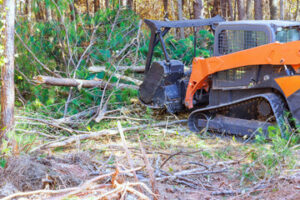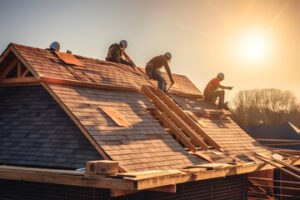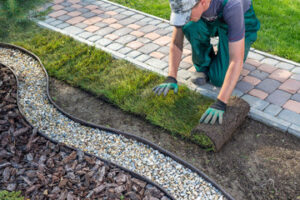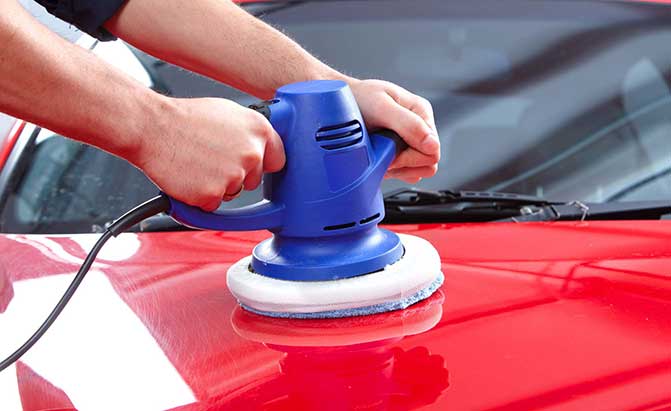Forestry mulching converts trees, brush and organic debris into mulch directly on-site. The mulch decomposes, enriching the soil with nutrients. This enables the growth of healthy plants and reduces soil erosion.

Unlike traditional clearing methods, forestry mulching leaves the roots of retained vegetation intact. This minimizes damage to the environment, enhancing soil health and preventing wildfire risks.
Forestry mulching is a revolutionary land-clearing method that uses specialized machinery to shred trees, brush, and vegetation into nutrient-rich mulch. This allows for the preservation of root systems, which helps protect soil from erosion and retain moisture. It also reduces the need for chemical herbicides and promotes healthy plant growth.
As the mulch decomposes, it enriches soils with organic matter and nutrient-rich nutrients, which supports vegetation regeneration and wildlife habitats. The process is also less costly than traditional clearing methods, and it helps reduce the carbon footprint of property owners. It can even be done on steep terrain and sloping terrain that would otherwise be difficult to access using traditional equipment, and it is ideal for clearing around power lines, fences, roads, and other structures.
Unlike traditional clearing methods, forestry mulching is eco-friendly and can be used on sensitive areas such as riparian zones. It also prevents soil erosion, allowing for water retention and reducing runoff into nearby rivers and lakes. The mulch layer also prevents weed growth and promotes the establishment of native plants, which reduces the need for chemical herbicides. In addition, forestry mulching provides fire-buffering benefits, keeping the soil cooler and lowering the risk of fire.
This process is ideal for farmers and ranchers who need to clear agricultural land for crop production. It is environmentally responsible, cost-effective, and provides superior erosion control and nutrient reintroduction. It also eliminates the need for chemical fertilisers, which reduces environmental damage to nearby waterways and soil.
For landowners, forestry mulching is a safe and affordable way to maintain a healthy environment and protect their property from wildfire and drought. It preserves the integrity of the landscape and keeps fences, roads, and power lines clear, while providing a fire-resistant barrier for homes and livestock. It also helps to protect natural water resources and reduces the need for irrigation.
In addition, forestry mulching is the best choice for restoring and maintaining ecologically important sites such as parks and wildland preserves. It is also an effective alternative to traditional clearing methods, such as burning and bulldozing, which are time-consuming and require expensive heavy equipment.
Cost-effective
Forestry mulching is a powerful tool that offers multiple benefits for property owners and the environment. The process uses a mulching machine to grind trees and other vegetation on-site, creating a layer of organic material that improves soil health and prevents erosion. It is also more cost-effective than traditional land clearing methods, such as bulldozing or grubbing. However, the success of the mulching process depends on several factors, including weather and season.
If the weather is wet or muddy, it can slow down the machinery and lead to costly delays. Additionally, the type of vegetation and terrain play a role in how quickly and effectively the mulching can be completed. For example, the ground must be dry to ensure that the machines can move freely and avoid getting stuck in the mud or sand.
In addition to reducing costs, the mulching process reduces the use of machinery and fuel, which lowers its environmental impact. It is also less invasive than traditional land clearing techniques, which can cause damage to the soil and desirable vegetation.
The forestry mulching process can be used in a variety of environments, from maintaining access roads and restoring properties after storms to enhancing agricultural productivity. It is also an effective way to protect wildlife habitats and safeguard homes from wildfires. It can be used to clear dense undergrowth and encroaching tree growth along fence lines, which can prevent livestock from reaching feed or water sources. It can also help maintain power lines, which are often threatened by encroaching trees and can lead to dangerous situations.
This method of clearing is fast and efficient, minimizing labor expenses and eliminating the need for offsite hauling. It also minimizes soil compaction, which can result in a loss of valuable topsoil. The mulched material also helps conserve water and reduces the need for irrigation, saving property owners money.
Safe
Forestry mulching is a safe and efficient method of land clearing that can be used for residential, agricultural, and commercial purposes. It eliminates weeds and other unwanted vegetation and leaves behind a layer of natural mulch that improves soil health. It also reduces the risk of erosion and fire. Unlike other land-clearing methods, such as burning and hauling off debris, mulching preserves native species and ecosystems.
This process uses a forestry mulcher to shred unwanted plants and trees into finely-ground material, which then decomposes into a nutrient-rich layer of organic matter. This method is particularly useful in reclaiming overgrown fields and pastures, as it can turn stubborn undergrowth into beneficial mulch. It is also used extensively for right-of-way clearing and maintenance of roads, pipelines, and power lines.
Mulching also helps prevent wildfires by eliminating combustible materials, such as small leafy plants, dead or rotten branches, and other debris. By reducing these fuel sources, mulching also helps to promote the growth of more fire-resistant plant species. It is particularly important in areas prone to wildfires, and can be an effective tool for fire mitigation.
Additionally, forestry mulching is an excellent way to maintain fence lines and other structures, and is particularly useful for properties with power lines. Overgrown vegetation along fences and power lines can damage the structure, creating a safety hazard and posing an increased threat of fire. Forestry mulching can clear dense undergrowth along fences and power lines, keeping them safe from the threat of fire.
Moreover, forestry mulching is a safe method of maintaining fences and power lines, as it protects property owners from liability by reducing the risks associated with damaged or destroyed property. It also provides a safe and stable environment for wildlife and ensures consistent safety standards.
Finally, forestry mulching also helps prevent soil erosion, as the natural layer of mulch protects the ground from wind and water. This is a significant benefit in regions prone to landslides or soil degradation. The mulching process also eliminates the need for heavy machinery, minimizing the risk of onsite accidents and injuries. It is recommended that all operators of forestry mulching equipment receive proper training and follow safe operating practices, including conducting regular maintenance checks and maintaining clear communication on-site.
Versatile
Forestry mulching is a versatile, environmentally friendly and cost-effective solution for clearing overgrown properties. The process involves using a specialized machine that shreds trees and vegetation on-site, creating a layer of nutrient-rich mulch that improves soil conditions and promotes healthy plant growth. In addition, it helps control erosion and prevents weed growth, making it a great choice for landscapers. Forestry mulching can be used in a variety of applications, including landscaping, land development, and fire prevention.
The forestry mulching process is significantly faster and more efficient than traditional clearing methods, such as burning or bulldozing. This method also reduces the carbon footprint and requires fewer materials for disposal. It is particularly useful for remote locations, as it can be performed without the need for large equipment. Additionally, it can be done in adverse weather conditions that would render other machinery impractical.
As opposed to other clearing methods, forestry mulching preserves the root system of the plants. This means that the mulch is not blown away by wind, which reduces the risk of erosion. Furthermore, the shredded vegetation adds nutrients to the soil as it decomposes, further promoting plant and soil health. In addition, forestry mulching reduces the need for chemical fertilizers.
Forestry mulching is also an excellent way to keep invasive species under control and maintain a consistent, aesthetically pleasing look for commercial property owners. It also helps ensure the safety of fences and power lines by preventing weeds and other unwanted vegetation from growing around them. In addition, regular forestry mulching can help retain moisture in the ground, reducing the need for irrigation and preventing the rapid evaporation of water from the earth. This is especially important in areas with sloping terrain, where erosion can be a major problem.



